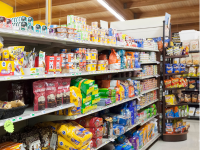Blogs
Search >>
At Eurofins Nutrition Analysis Center, we highlight the critical role of texture analysis in pet food quality. This video explains how texture analysis quantifies product consistency and provides valuable insights into performance across the supply chain from R&D to addressing customer complaints.
At Eurofins Nutrition Analysis Center, we break down the latest AAFCO changes to dietary fiber labeling in pet foods. In this video, our experts guide you through selecting the right testing method based on product type, offering a comprehensive overview of available analytical approaches.
In this video, Eurofins Nutrition Analysis Center experts delve into the importance of using specialized test methods for chondroitin and glucosamine in complex pet food and treat matrices. We showcase the proprietary method developed by our scientists to overcome analytical challenges and ensure accurate results.
Low water activity foods (LWAFs) have historically been considered low-risk for microbiological hazards because their limited “free” (unbound) water in the formulation prevents bacterial growth. However, foodborne illness outbreaks revealed that pathogens can survive for extended periods in LWAFs, even in the absence of growth. Watch now to learn what is required to validate control measures to reduce microbial risks in LWAFs. Originally Aired on June 18, 2025.
Iodine is an essential trace element found in many food sources as well as the environment. AAFCO recognizes iodine as an essential nutrient for both dogs and cats at differing, species specific levels. This infographic explains explores considerations for iodine in pet food and reasons to test for it.
Hydrolyzed proteins play a crucial role in the pet food, animal nutrition, and feed industries, offering significant benefits in digestibility, allergen reduction, and bioavailability. This white paper explores the advantages of hydrolyzed proteins and their impact on product formulation.
The Pet Food Label Modernization (PFLM) initiative is reshaping industry standards, making dietary fiber a required metric. Learn how this change impacts pet food formulations, testing methods, and nutritional transparency.
Historically, testing for chondroitin sulfate and glucosamine has been done via HPLC-UV analysis via methods from AOAC or USP-NF monographs, which are not suitable for complex matrices such as pet food. Check out our infographic about an innovative solution developed specifically for pet foods and supplements.
Watch this webinar for a discussion on the background behind AAFCO’s recommended method and other commonly used methods, with a focus on which dietary fiber component each method quantifies, and scenarios where it is appropriate to use an alternate method. Original Air Date: April 16, 2025
















